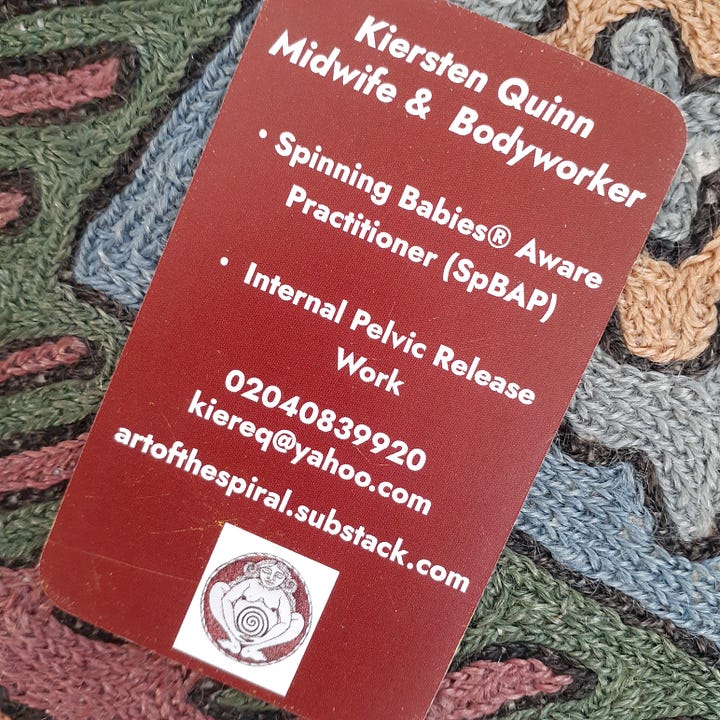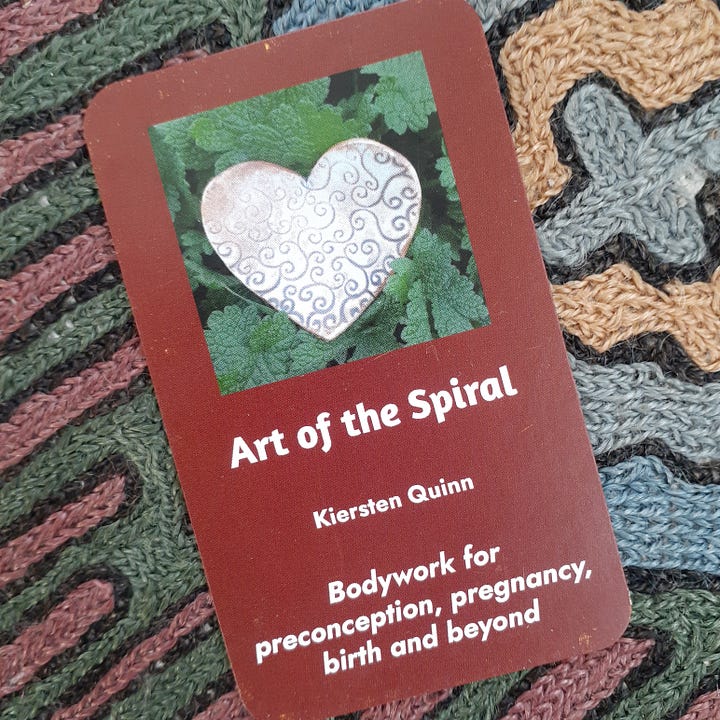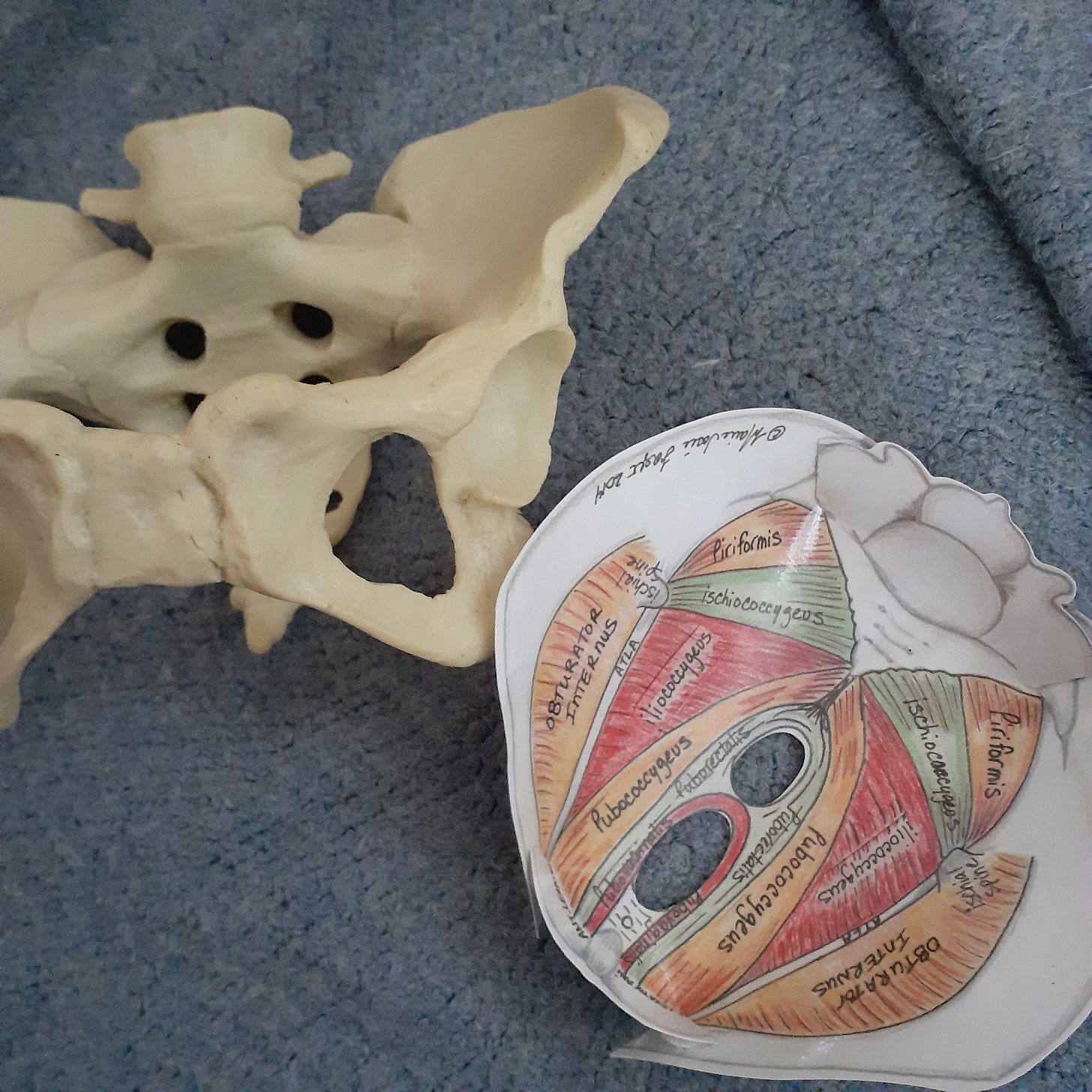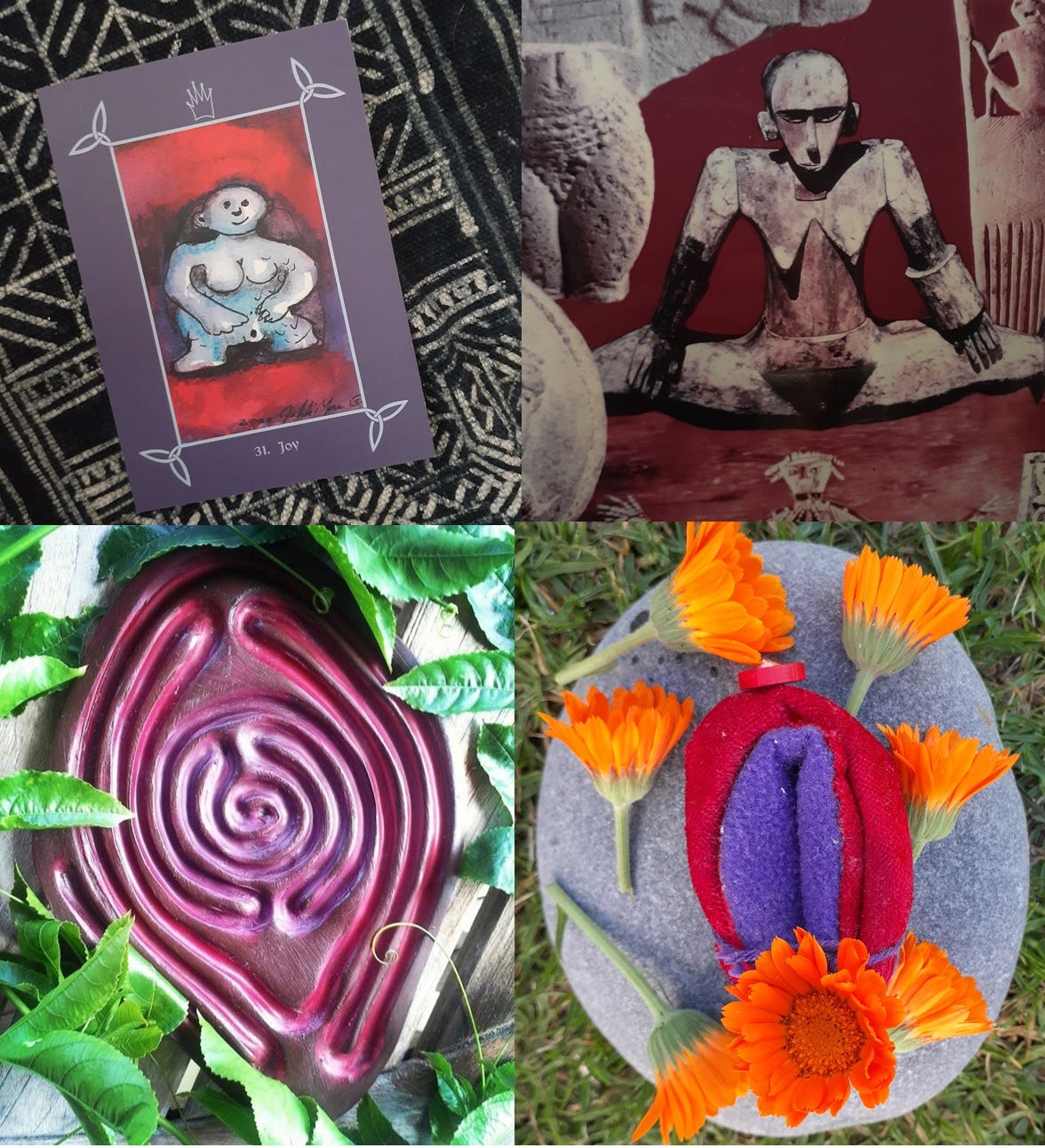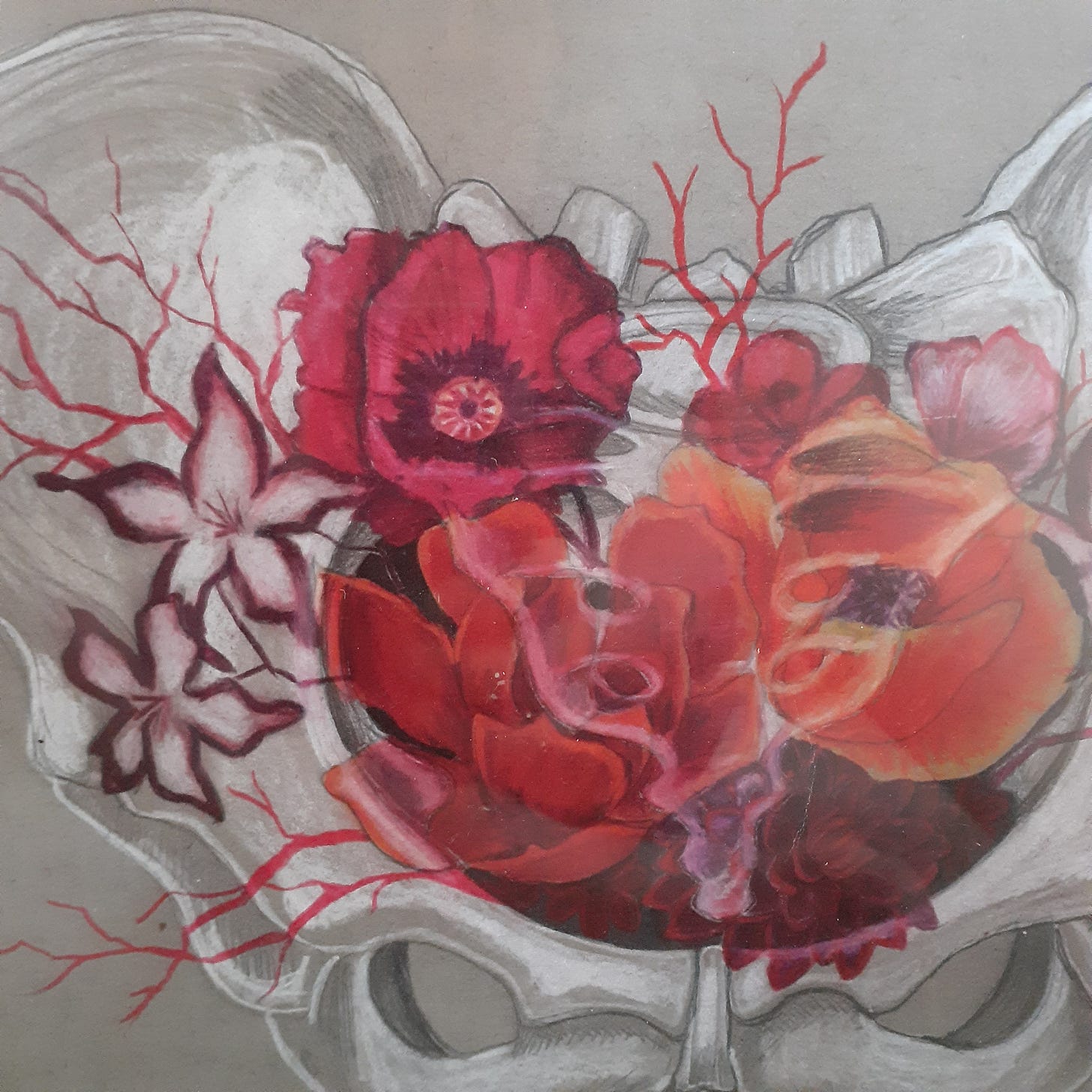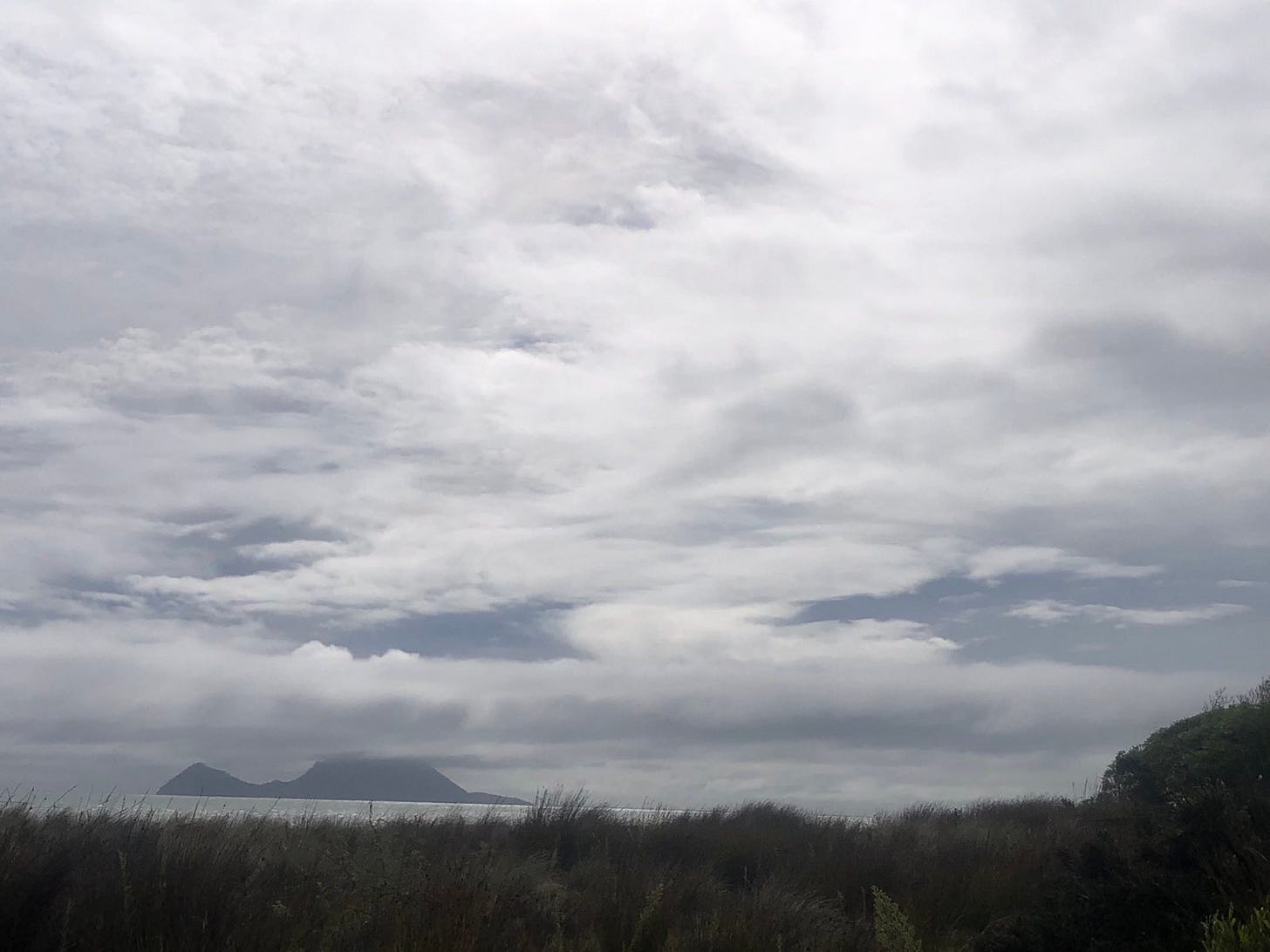Kia ora!
My intention this month is to write about the internal pelvic release work (iprw) I offer. And to be honest, I want to write about it fairly succinctly. I’ve just spent some extended time being mostly outside and moving my body without any phone/device reception which is my ultimate happy place. I’m conscious of not creating a distraction which might be stopping you from moving your body outside or anywhere else!
Internal Pelvic Release Work
It feels essential to describe internal pelvic release work grounded from the perspective of how I've experienced the learning of it in my own tissues.
Iprw has always felt like an exploration of curiosity and deep listening. What are the voices of our tissues? What are they willing to share with us and in what way will we receive this information?
As a specific example, because some tissues 'speak louder' than others when receiving touch via bodywork (internally) it's hard to ignore the voice of my sacrospinous, she’s an assertive speaker.
I've been learning iprw from Aussie wise women Fiona Hallinan and Jenny Blyth since 2010. They each originally learned alongside Wintergreen who created The Pink Kit. Fiona and Jenny now teach an incredible IPRW Mentoring Program in different locations in Australia which you can see more about here.
It’s interesting to reflect back on the way in which my formative learning of bodywork with Jenny and Fiona laid the foundation for how I came to conceptualise birthwork. Since then, bodywork has been integrated throughout my work as a Birth Attendant / doula and Midwife.
What does a session involve?
Each session is unique to each person, every time.
To give a brief overview, it usually begins with a conversation around the intention of the session, some logistics, external body balancing and then internal pelvic work.
Bodies are so wise in the way in which they say yes or no and my listening to that is integral. Lyn Schulte has recently published two short podcasts which speak to this precisely. The target audience is probably practitioners but they are well worth a listen if you are curious.
This piece of writing isn’t long enough to cover a nuanced description of dialoguing around consent during a session but it is at the core of this work. I would recommend touching base with the work of Betty Martin and The Wheel of Consent which I was introduced to by Jotara Watson around 6 years ago and more recently during Sacred Birthcraft with Claire Eccleston.
Why would someone want to have internal pelvic release work?
Internal pelvic release work centres the way in which space is created in the bones and tissues when tension is released through respectful touch. Tissues seem to ‘sigh’ or ‘melt’. And with this in mind the reason that women seek this work out is predominantly for release of tension to create space and comfort in the body.
The bones and tissues of the pelvis can metabolise a variety of ways in which pain and discomfort are expressed when offered respectful touch which listens deeply.
Some of the learnings from this work that are top of mind for me at the moment
Learning internal pelvic release work has inevitably shaped the way that I offer touch overall, including vaginal examinations, in my midwifery mahi /work. Respectful touch with presence is inherent to the art of midwifery, particularly in this instance (thanks Fiona Hallinan for this gem which seems obvious but doesn’t always translate in a clinical setting where staff are time pressured etc.).
I have learned and been reminded many times over that I need to keep this work ‘current’ in my own body. Again, this is another, longer piece of writing but when I initially learned the internal pelvic release work from Fiona, it was to teach my partner so they could offer it to me on an ongoing basis. There is always something to learn.
One of the most profound things that I am reminded of when I offer this work is that women routinely do not perceive their body to be ‘theirs’. The concept of a woman’s body belonging to her for her seems foreign. Shame, fear and grief seem much more common and familiar.
Teaching a partner or trusted friend is one of my preferred ways to work. I would encourage anyone that can, to bring their partner or a steady, willing support person. The benefit of a teaching session (so that the work can be continued) is a good fit for some women.
Some final details
Before meeting for the session, I usually make time to either chat or exchange email about what the intention or expectation for the session is and there’s also time at the beginning and end of the bodywork for discussion.
It’s a great idea to bring a drink bottle and a scarf or something warm to wear around the abdomen at the end of the session.
If you can create space in your day to allow for a rest / nap / early night afterwards then that is ideal. I live in an area rich in geothermal hot pools and a trip to a hot pool would also be amazing aftercare.
Who else offers this work in Aotearoa?
Claire Eccleston in Tāmaki Makaurau / Auckland
Another midwife based on Te Ika-a-Māui / the North Island is currently journeying through the IPRW mentorship at the moment. Watch this space for more details about their mahi.
Bodywork for locals
I'm passionate about the wisdom and intelligence of bodies and especially how this can be supported in pregnancy, birth, postpartum and beyond with bodywork.
I offer Spinning Babies® Aware Practitioner (SpBAP) bodywork and also internal pelvic release work.
If you’re interested in booking an appointment or having a chat about the bodywork I offer, feel free to text or call me on 02040839920. There’s even more information on this page that might be helpful.
If there’s someone you know that’s local to Whakatāne/Eastern Bay of Plenty and would appreciate a koha appointment - please send them the link to the newsletter, and they can feel free to make an appointment.
Places my attention has been lately…
Bodyworker Susan Raffo's most recent blog about giving the bones back and her newsletter where she described: ‘…starting in April, I am going to be walking from the Atlantic coast to the Pacific coast of Turtle Island.’
Lara Briden - she just keeps popping up on my radar and she lives in Aotearoa!
This interview on friendship intimacy by Anne Helen.
Lucy Pierce's art - Lucy made a beautiful piece of art for me many years ago when I worked as a Birth Attendant and I've just incorporated it into a very basic card to advertise my mahi / work after a few friendly and persistent requests (you can see the images at the very bottom of my newsletter).
Hours of out-loud reading to my tamariki /kids of Ataria Sharman's brilliant book: Hine and the Tohunga portal.
Dreaming about Kaia Hawkins dance workshops with a beautiful friend who lives local to Kaia .
Kūmarahau from Aroha Ra Rongoā Māori for the change of season.
Jo Angwin's line of inquiry and continually pointing to the teacher within, as she puts it, has been a through-line for me for 15 years. Even now that it’s on-line and in a different country. Grateful.
A research paper on holistic abortion entitled: Supported at-home abortion: An exploratory study of methods, outcomes, and motivations of community-led abortion care in the United States and Canada. Free permanent access at Home Abortion Research
Gina Chick’s soul shaking writing here and here and her interview, about how she processes grief and physical discomfort.
The riding of a mountain bike and end of summer swimming sessions. In the sea and then the awa / river in the same session with the whole whānau / family.
P.S
Hoping you’re finding some balance or at least some flow at this time of the equinox. In my own reach towards some more balance, my writing is arriving here with you now instead of a week ago. It feels like the perfect timing.
